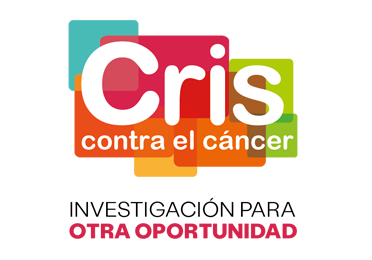• Resistance to targeted therapies for lung cancer, the most common cancer worldwide, represents one of the major limitations in combating cancer and delivering on the promise of precision oncology. It is therefore critical that we advance our understanding of such resistance in order to develop more effective targeted drugs
• A study published today in Nature Medicine describes a specific mechanism of resistance found in more than 50% of cases
Barcelona, May 04, 2015. Collaboration between investigators from the Vall d’Hebron Institute of Oncology (VHIO) and the Dana-Farber Cancer Institute (Boston, USA), among others, has led to the identification of a mechanism of resistance to a new drug under clinical investigation for advanced lung cancer. This discovery, published today in Nature Medicine, deriving from research into circulating DNA in plasma (cfDNA) and tumor biopsies from patients with advanced non-microcytic lung cancer in a clinical trial, has described resistance mutations to this new therapy inhibiting mutation of the EGFR protein.
Thanks to the discovery of molecular alterations that in turn led to the development of much more targeted therapy — as was already occurring for other tumor types, the prospects for treating lung cancer began to improve a few years ago. The mutation of EGFR, a tyrosine kinase receptor present in approximately 10% of patients with advanced non-microcytic lung cancer, which leads to protein activation, is one example. That discovery gave rise to the very first agents to inhibit this protein, which were successfully applied to this subtype of lung cancer. Oral drugs such as gefitinib, erlotinib and afatinib have since entered into the treatment regimens aimed against these tumors.
Mutations: from activation to resistance
As is the case with other therapies targeting molecular events, resistance eventually occurs. The way to resolve this problem is to have anti-cancer weaponry in the form of a number of active molecules against resistance that can be consecutively applied. Patients with these EGFR-activating mutations who receive treatment with EGFR tyrosine kinase inhibitors will develop resistance in 9-14 months due to new mutations, acquired over time. The resistance mutation known as T790M is detected in approximately 50% of patients with acquired resistance to EGFR tyrosine kinase inhibitors. For this subgroup of patients, the drug under clinical study – research which VHIO has been involved in from very early stages, is both of use and showing promising response rates – – as evidenced by findings from the AURA trial published last month in the New England Journal of Medicine (NEJM).
This new study, published today, identifies another mutation – – the Achilles’ heel of this therapy. “This is typical of all drugs that we handle in clinical practice,” explains Enriqueta Felip, Principal Investigator of VHIO´s Thoracic Tumors Group. “We are constantly striving to develop drugs that are effective when resistance appears. This study drug is a selective inhibitor for the EGFR-acquired resistance mutation that does not affect non-mutated EGFR, hence, its selectivity. It shows very good response rates with up to 10 months free of disease progression once the first battery of drugs ceases to work due to resistance to previous therapy,” she says. “This data provides us with important insights into the potential of this drug and prepares us for the next step, even before it is marketed.”
Ana Vivancos, Principal Investigator of VHIO´s Cancer Genomics Group, explains that “identifying this new mutation and knowing when it appears tells us what to look for in these patients. This is essential in guiding us towards the next targeted drug. Not only do we know which mutation it is, but we also understand what happens and why these patients stops responding to the therapy.”
The study, in which the VHIO Thoracic Tumors Group and Cancer Genomics Group have participated, together with the Dana-Farber Cancer Institute, has unmasked one of the main mechanisms of resistance to this new drug. This enables a much more precise understanding as to what will happen next, which acquired mechanisms of resistance need to be looked for in this therapy, and ultimately allow us to define a strategy aimed at developing new molecules against this type of cancer.
About lung cancer
Lung cancer is the most common cancer worldwide, with 1,400,000 new cases diagnosed every year. According to the Spanish Association Against Cancer (AECC), around 20,000 cases are diagnosed each year in Spain, representing 18.4% of all tumors in men (18,000 cases) and 3.2% in women (2,000 cases). Smoking has been identified as the culprit behind a high percentage of lung cancer cases. There is therefore a clearly decreasing trend in cases occurring in countries where the number of smokers has declined.
###
For more information please contact: Amanda Wren, Director of Communication,
Vall d´Hebron Institute of Oncology (VHIO), Tel: +34 695207886, Email: awren@vhio.net











